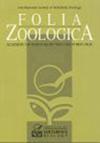Detection of earthworm chaetae in mammal faeces: methodological implications
Q2 Agricultural and Biological Sciences
引用次数: 2
Abstract
Abstract. Earthworms are an important food resource for a large number of mammals and one of the most largely used method to assess their contribution to mammals' diet is the search for chaetae in faecal samples. Nevertheless, the observation and the identification of these bristles often require properly trained operators and suitable instruments, since their detection can be difficult and time-consuming. We tested the “standard” method for chaetae detection by washing 1046 scats – belonging to four mammal species of the Western Italian Alps (Vulpes vulpes, Martes spp., Lutra lutra, Sus scrofa) – through three sieves differing in mesh size (1.00, 0.54 and 0.21 mm). Mesh size significantly affected the detection of earthworm chaetae, suggesting that the use of three sieves should be recommended in faecal analyses. Moreover, both earthworm size and mean number of chaetae per individual should be assessed in each study area prior to diet analysis.哺乳动物粪便中蚯蚓毛羽的检测:方法学意义
摘要蚯蚓是许多哺乳动物的重要食物来源,评估蚯蚓对哺乳动物饮食贡献的最常用方法之一是在粪便样本中寻找毛纲。然而,观察和识别这些刚毛通常需要经过适当培训的操作人员和合适的仪器,因为它们的检测可能是困难和耗时的。我们测试了毛纲检测的“标准”方法,通过三种不同网目大小(1.00,0.54和0.21 mm)的筛子洗涤1046种属于意大利西部阿尔卑斯山脉的四种哺乳动物(Vulpes Vulpes, Martes spp., Lutra Lutra, Sus scrofa)。筛孔大小对蚯蚓毛囊的检测有显著影响,建议在粪便分析中推荐使用三筛。此外,在饮食分析之前,应评估每个研究区域的蚯蚓大小和每个个体的平均毛纲数量。
本文章由计算机程序翻译,如有差异,请以英文原文为准。
求助全文
约1分钟内获得全文
求助全文
来源期刊

Folia Zoologica
生物-动物学
CiteScore
1.70
自引率
0.00%
发文量
0
审稿时长
3 months
期刊介绍:
Information not localized
 求助内容:
求助内容: 应助结果提醒方式:
应助结果提醒方式:


